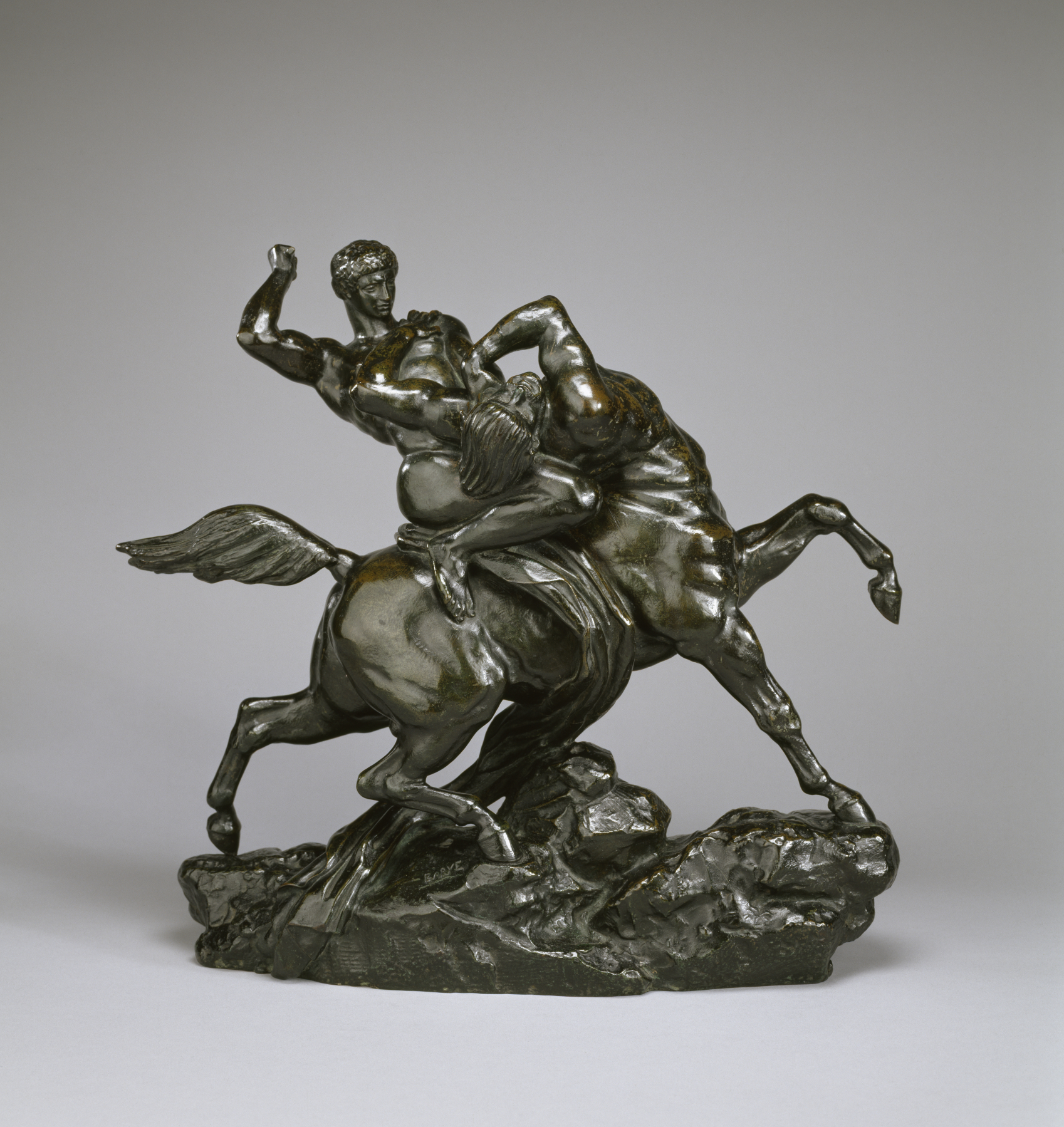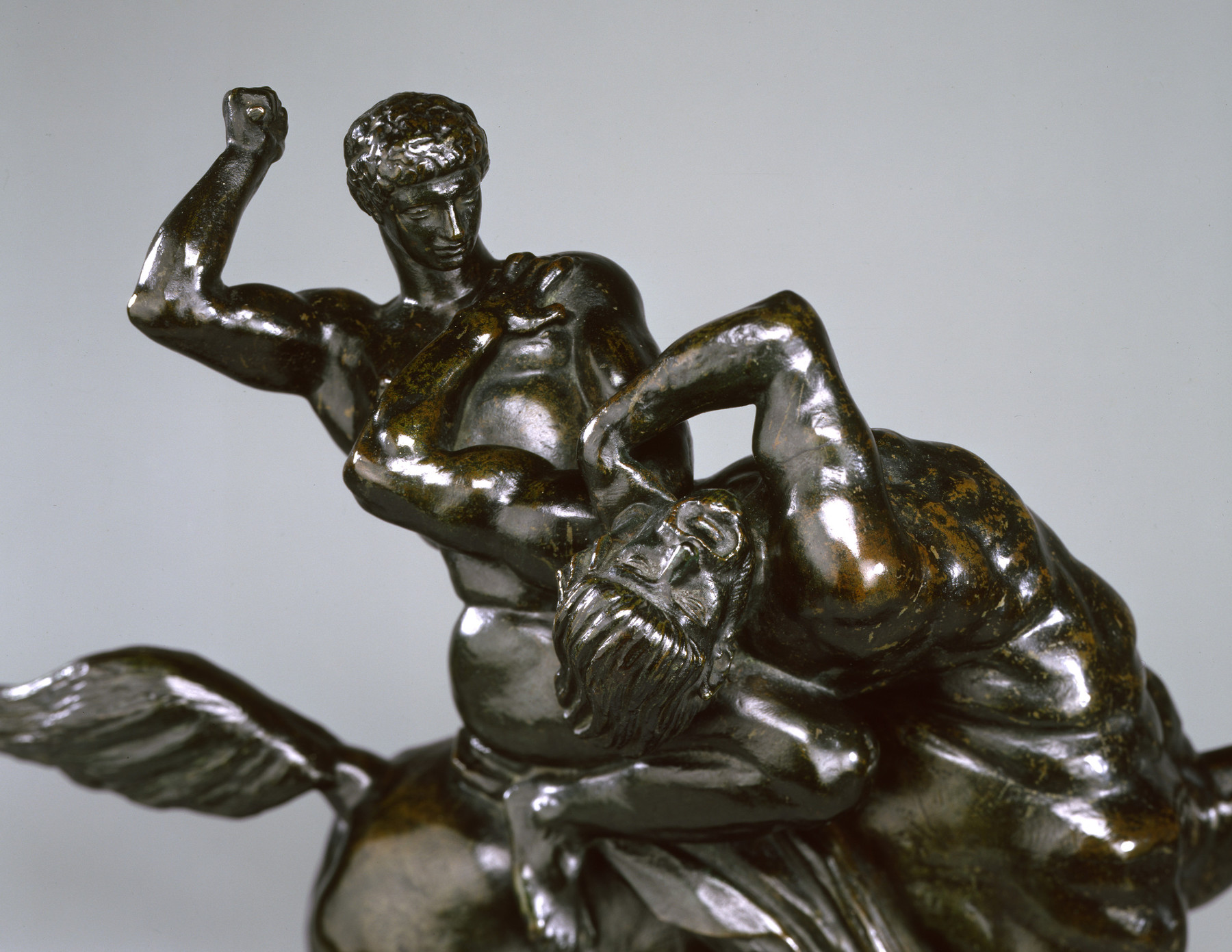Lapith Combating a Centaur
(18th and 19th Centuries )
The hero Theseus has leapt on Bianor's back and seized him by the neck as he prepares to deliver a deadly blow. Barye has depicted an incident from The Metamorphoses, a history of the world by the Roman poet Ovid (43 BC-AD 17). In ancient Greece, the Lapiths, a mythical people of Thessaly, invited to the centaurs to a wedding. The centaurs were mythical creatures, half man and half horse, who roamed Arcadia, a region of Greece, and were notoriously destructive. All the centaurs were killed following a fight that erupted when they tried to carry off the Lapith women.
Inscription
Provenance
Provenance (from the French provenir, 'to come from/forth') is the chronology of the ownership, custody, or location of a historical object. Learn more about provenance at the Walters.
William T. Walters, Baltimore, prior to 1889; Henry Walters, Baltimore, 1894, by inheritance; Walters Art Museum, 1931, by bequest.
Exhibitions
| 2007-2008 | Untamed: The Art of Antoine-Louis Barye. The Walters Art Museum, Baltimore; Philbrook Museum of Art, Tulsa; The Henry Morrison Flagler Museum, Palm Beach. |
| 1850 | Salon, Paris, 1850. Musée du Louvre, Paris. |
| 1889-1890 | The Works of Antoine-Louis Barye. American Art Gallery (New York), New York. |
Geographies
France, Paris (Place of Origin)
Measurements
13 5/8 x 15 x 5 3/8 in. (34.6 x 38.1 x 13.7 cm)
Credit Line
Acquired by William T. Walters, before 1889
Location in Museum
Hackerman House at 1 West Mount Vernon Place: First Floor: Parlor
Accession Number
In libraries, galleries, museums, and archives, an accession number is a unique identifier assigned to each object in the collection.
In libraries, galleries, museums, and archives, an accession number is a unique identifier assigned to each object in the collection.
27.36




